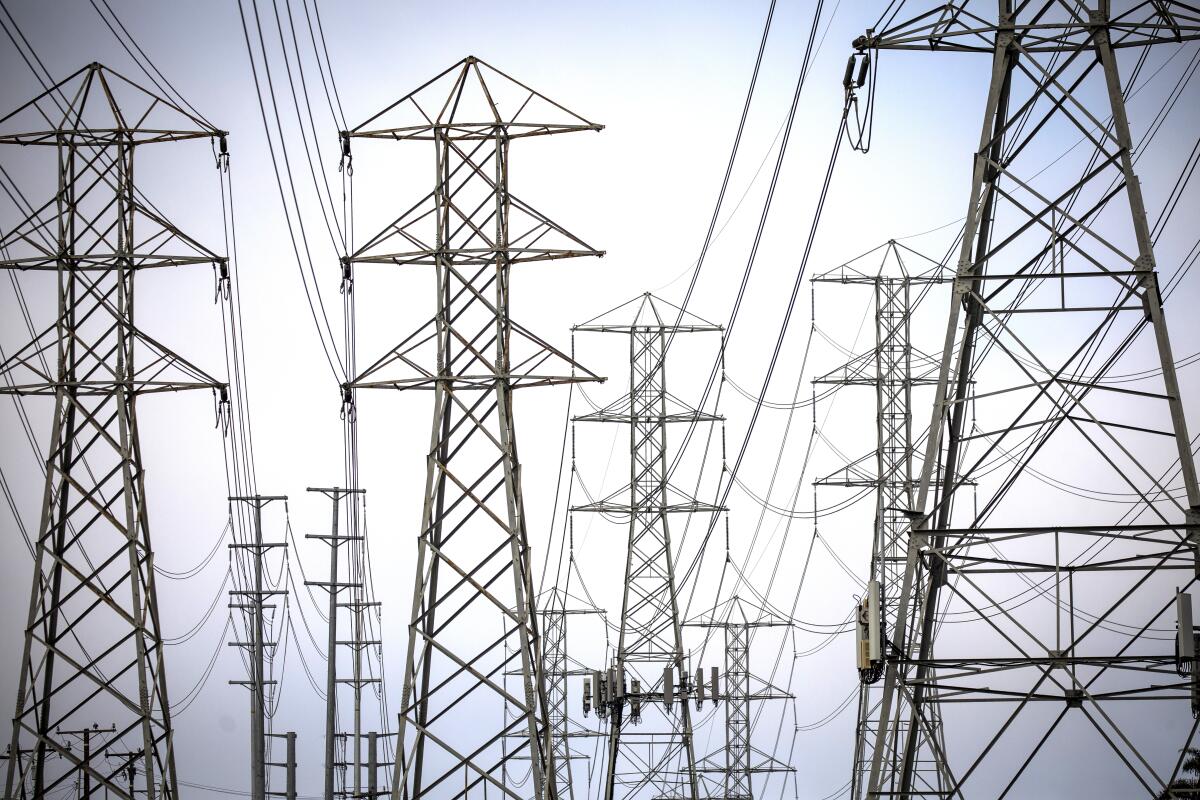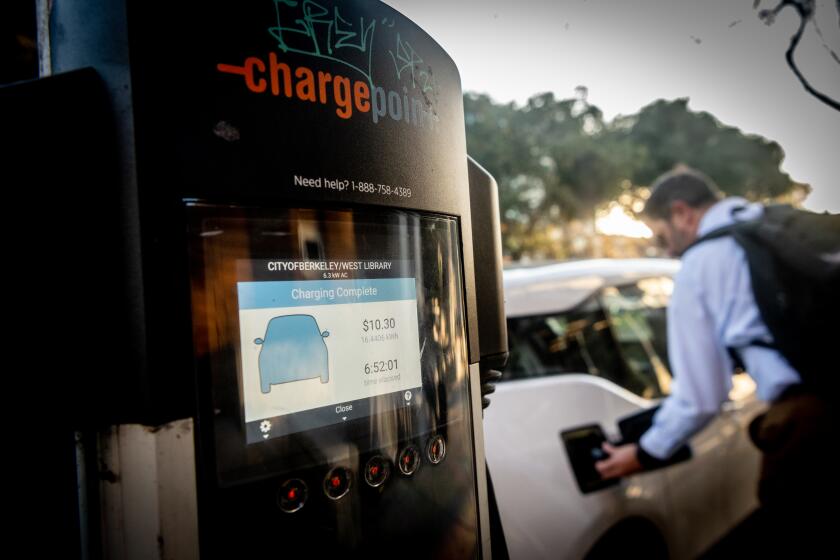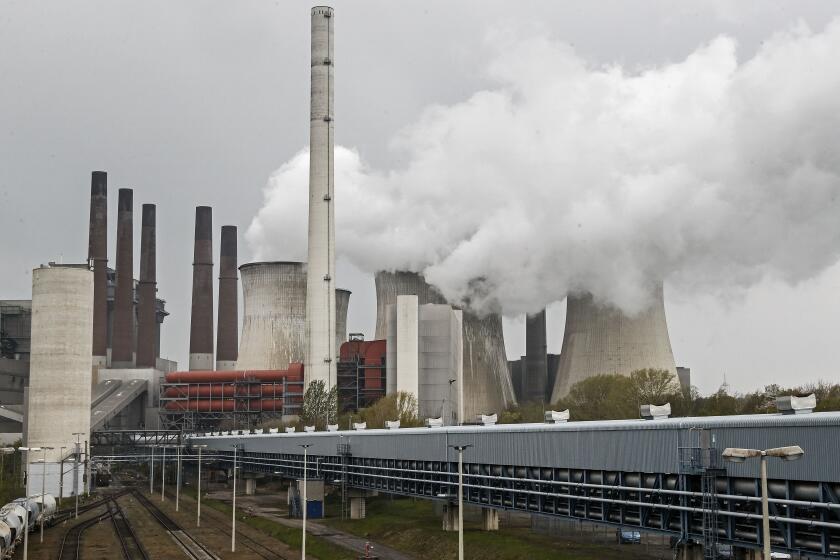Editorial: California shouldn’t let power companies get their way on our electric bills

- Share via
What Californians pay on their electric bills is based almost entirely on how much power they consume, with maintenance, grid operation and other expenses built into the rates.
That’s a problem, not only because rates in California continue to climb even while state climate policies push people to switch to electric vehicles and appliances. But because energy use does not vary as much by income as you might think, it means that low-income customers end up spending more of their paychecks supporting the utilities’ infrastructure than wealthy users.
That’s soon going to change. Under Assembly Bill 205, a sweeping energy bill the California lawmakers passed last year, the state Public Utilities Commission is required to adopt fixed monthly charges based on household income for the three big investor-owned utilities to help pay for delivery costs including poles, wires, energy efficiency subsidies and wildfire mitigation, while lowering consumption-based rates.
I love my electric car, but after more than three years I’m thinking of trading it in for a fossil-fueled model because even in California it’s not easy being a green motorist.
California is breaking new ground with this progressive approach. Using income-based brackets means higher earners would pay more and low-income Californians would not shoulder too much of the burden from home and vehicle electrification. But state regulators shouldn’t go as far as the three big utilities — Southern California Edison, San Diego Gas & Electric and Pacific Gas & Electric — have proposed. Instead, the state should ease into what will be a radical change in how residential customers pay for power.
Earlier this month the utilities, consumer advocates, environmental groups and others each submitted proposals for how the new fixed-charge system should be designed. The utilities want higher fixed charges to cover more of their infrastructure and administrative costs. Southern California Edison’s proposal, for example, has low-income customers paying between $15 and $20 a month on top of their usage. The monthly charge for middle-income customers would be $51, and $85 for customers in the top 19% of earners. The rates for the amount of electricity used would decrease by about 33%.
Consumer and environmental groups proposed a variety of more reasonable alternatives with lower fixed charges.
U.N. climate report shows we can’t just phase out oil and gas; we have to deliberately dismantle existing infrastructure, such as coal plants in China and drilling in Alaska.
The investor-owned utilities’ use of fixed charges had been capped out of a well-founded concern that assessing an across-the-board fee would discriminate against low-income customers who use less electricity. Climate change necessitated a move from focusing solely on energy conservation to shifting from fossil fuels to electricity generated from wind, solar and other clean, renewable sources. The utilities have pushed to recover more of their costs through fixed charges, and would benefit from the certainty of knowing what they will collect, no matter how much their customers consume. Consumer advocates came to support the idea as long as the charges were graduated by income.
There are many details yet to be worked out by the PUC before final approval is expected in 2024. One of the most important will be coming up with a realistic and secure way to verify household income without giving utilities access to customers’ financial information. Whether that’s through a state agency using tax data or an outside party, such as a credit agency, this process should be as automatic, painless and protective of privacy as possible.
But if done carefully, this new approach could help customers save money as they replace their gas-fueled cars and furnaces with electric vehicles, heat pumps and other zero-emission technology, and roughly double their household electricity use.
It’s terrible for consumers as well and undermines the message that everyone should dump their gas guzzlers soon. President Biden should figure out how to expand incentives for more electric vehicles.
To be clear, this plan does nothing to limit the total amount of money utilities are allowed to bill their customers in the future, and the PUC continues to approve massive rate hikes that are making power less affordable. California already has some of the highest electricity rates in the nation. They have roughly doubled over the last decade and are forecasted to rise as much as 26% by 2025.
California needs to race toward home and vehicle electrification to confront a worsening climate crisis. If done with care and caution, this redesign of electricity rates and charges can smooth the transition to a zero-emission future and minimize customer backlash. Regulators should take pains to get it right.
More to Read
A cure for the common opinion
Get thought-provoking perspectives with our weekly newsletter.
You may occasionally receive promotional content from the Los Angeles Times.













